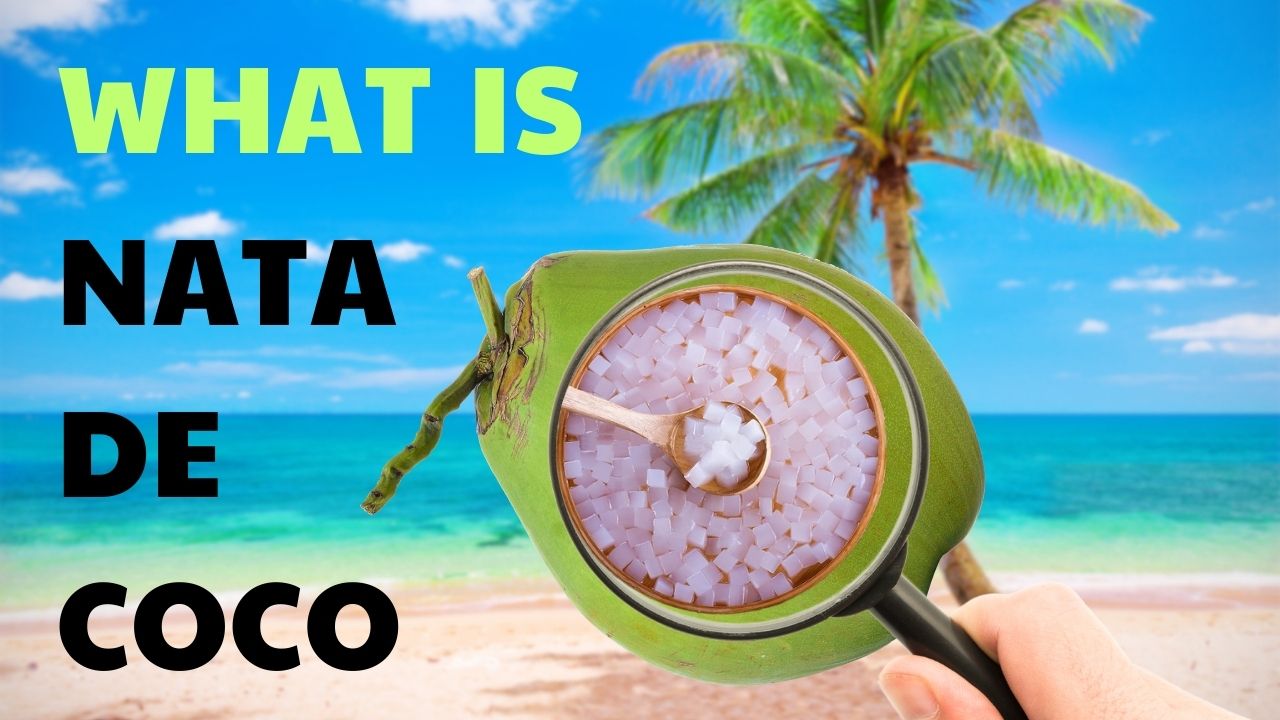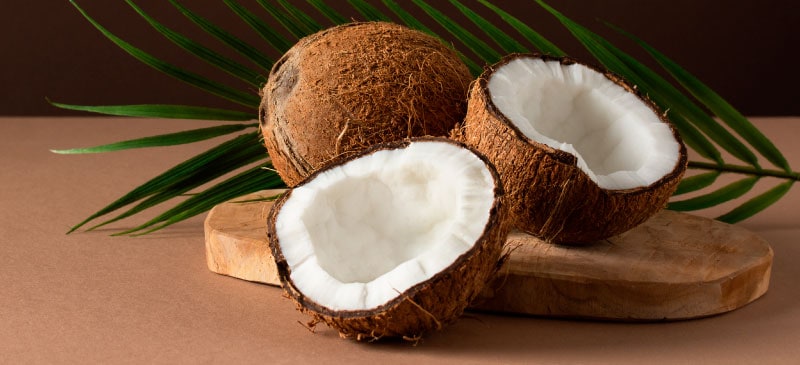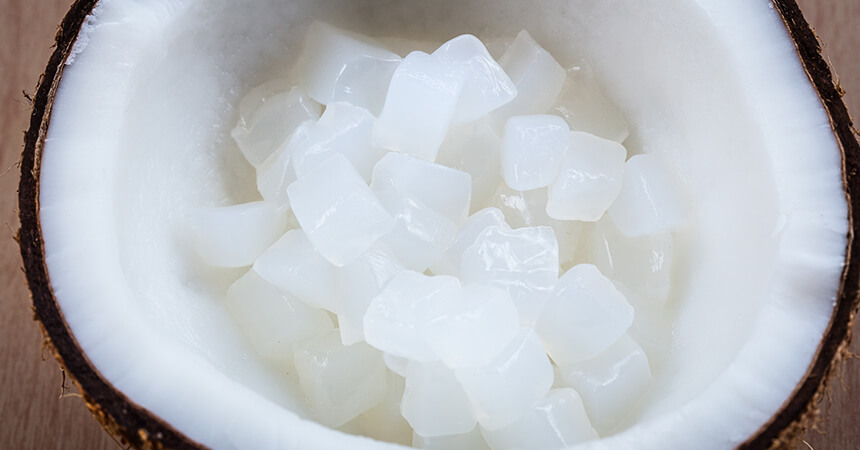Have you ever wondered, “What is nata de coco?” and “How to make Nata de coco?” while enjoying this famous Southeast Asian snack? People think it’s chewy, sweet and delicious. This article will illuminate what this food is and how nata de coco is produced.
What is nata de coco ?
Nata de coco is a chewy, translucent jelly-like substance popular in Southeast Asian desserts and beverages. It originated in the Philippines and is made from coconut water that undergoes fermentation with acetic acid bacteria, resulting in cellulose forming a jelly-like texture.
Nata de coco is typically sweetened and used as an ingredient in various dishes, drinks, and desserts due to its unique texture and refreshing taste. It is often added to drinks such as fruit juices called nata de coco juice, smoothies, bubble tea or desserts such as puddings, ice cream and fruit salads. Nata de coco is enjoyed for its chewy consistency and ability to enhance dishes and beverages’ overall texture and flavour.
Nata de coco tree
People who do not know “what is nata de coco” often think it is the name of a tree, but in fact, it is not. The nata de coco tree does not occur in nature, and nata de coco is not obtained from the tree because it is not a natural product of the tree. Instead, nata de coco is derived from coconut water, a refreshing liquid in coconuts.
The nata de coco tree, commonly known as the coconut palm tree, is a tall, tropical tree that grows in countries like the Philippines, Thailand, and Vietnam. This tree produces coconuts, which are then used to extract the water that forms the base for nata de coco.
Nata de coco fruit
The main ingredient in making nata de coco is coconut water. Nata de coco is produced by fermenting coconut water with Acetobacter xylinum bacteria, which causes the liquid to gel and form a jelly-like substance. The resulting gel is then cut into small, translucent cubes or pieces known as nata de coco. Nata de coco is often used in desserts, beverages, and snacks due to its unique texture and mild sweetness. While nata de coco originates from coconut water, it is not a fruit but a byproduct of fermentation.

Read more: 4 Delicious Types Of Nata De Coco Desserts
How to make Nata de coco?
Ingredients and Equipment for Nata de coco making
Try this easy nata de coco recipe. First of all, you need to prepare ingredients including:
- Coconut water
- Refined sugar
- Ammonium phosphate
- Acetic acid
- Nata starter
- And, some equipment containing:
- Weighing scale
- Wide-mouthed glass jars or basins
- Strainers
- Kettles chewy, translucent, jelly-like food produced by the fermentation of coconut water.

You could find more about the “Amazing Benefits of Nata de Coco for Health”.
Nata de coco Production Stage
After the preparation stage, we now start with the production stage:
- A cheesecloth is used to filter the coconut water that has been collected. For every liter of coconut water in a container, 100 grams of refined sugar and 5 grams of monobasic ammonium phosphate are combined. The mixture is covered and allowed to come to a boil. After boiling, it is allowed to cool, and 6 to 9 cc of glacial acetic acid are then added.
- To the mixture, 110–150 ml of starter (purchased at ITDI) are added. After that, it is moved to large mouthed clean jars with room for the mixture on top, and then covered with clean cheese cloth. For at least 15 days, the culture is allowed to grow at room temperature. Reminder: Don’t move the jars while they are growing. A cheesecloth is used to filter the coconut water that has been collected. For every liter of coconut water in a container, 100 grams of refined sugar and 5 grams of monobasic ammonium phosphate are combined. The mixture is covered and allowed to come to a boil. After boiling, it is allowed to cool, and 6 to 9 cc of glacial acetic acid are then added.
- After 15 days or longer, the harvest is ready, provided that everything is aseptic. This allows one to reuse the residual liquid, which acts as a starter for further preparations.
- Making desserts. The “nata” is divided into cubes and repeatedly boiled in new water to completely remove the acidity. For every kilogram of nata, one kilogram of refined sugar is added and combined. The mixture is heated to boiling before the “nata” cubes turn transparent.

See more: 4 New Tips For Homemade Nata De Coco
Some type of nata de coco fruit
The quality and characteristics of nata de coco can be influenced by the type of coconut used, especially coconuts that contain a lot of water. Generally, young green coconuts are preferred for making nata de coco due to their higher water content and suitability for fermentation. Here are some types of coconuts that are commonly used to make nata de coco
Young Green Coconuts (Buko)
Young Green Coconuts, also known as “Buko” in the Philippines, are harvested from young coconut trees, usually between the ages of 5-7 months. Coconut water from young coconuts has a naturally sweet flavour and contains a lot of water, making it an ideal ingredient for producing nata de coco. Buko young coconuts usually have green shells and clear water.
Malayan Dwarf (Malayan Yellow) Coconuts
The Malayan Dwarf coconut, also known as Malayan Yellow, is a coconut variety with sweet juice and delicious flavour. Coconut water from this type is also very suitable for making nata de coco with good quality.
Laguna Tall Coconuts
Laguna Tall coconuts are commonly used in the Philippines to make nata de coco. The water from these coconuts is suitable for fermentation and produces good-quality nata de coco.
Vietnamese Dwarf (Green Dwarf) Coconuts
Vietnamese Dwarf coconut, also known as Green Dwarf, is a popular type of coconut in Vietnam. Coconut water from this variety has a sweet taste and is very popular in creating the tastiest chewy nata de coco.
West African Tall Coconuts
The West African Tall coconut is native to the West African region and can make nata de coco. Coconut water of this type is suitable for fermentation and creating nata de coco products with unique flavours.
Overall, the best types of coconuts for making nata de coco are those that provide sweet, clean-tasting water with a good balance of nutrients. Young green coconuts are generally preferred due to their high water content and natural sweetness, resulting in high-quality nata de coco with a pleasant texture and flavour.

See more: 8 Juices With Nata De Coco
Nawon’s Nata de Coco drink wholesale
Nawon Food and Beverage Company Limited’s mission and commitment to providing healthy and nutritious drinks. Focusing on introducing Vietnamese tropical healthy drinks worldwide, Nawon aims to improve customers’ everyday health and well-being.
The slogan “Your Health – Our Mission” reflects the company’s dedication to prioritizing the health of its customers. By offering a range of healthy and nutritious products, Nawon aims to support individuals in improving their overall health and quality of life.
Additionally, Nawon’s commitment to continuously improving their beverages’ taste and nutritional quality demonstrates their dedication to providing enjoyable and beneficial drink options. By helping millions of people enjoy delicious and nutritious beverages, the company strives to promote a healthy lifestyle among its consumers.
Nata de coco offers a unique and refreshing treat that is perfect for complementing desserts and combining with fruit juices to make delicious nata de coco juice. Answering the question “What is nata de coco” also means that you have discovered a delicious dish you must try. With just a few simple ingredients and a little patience, you can easily make this absorbing coconut gel at home.
Embrace the essence of nata de coco and indulge in its subtle sweetness and chewy texture. Whether you enjoy it as a snack or incorporate it into your favourite recipes, nata de coco will surely bring flavour and excitement to your taste buds.
